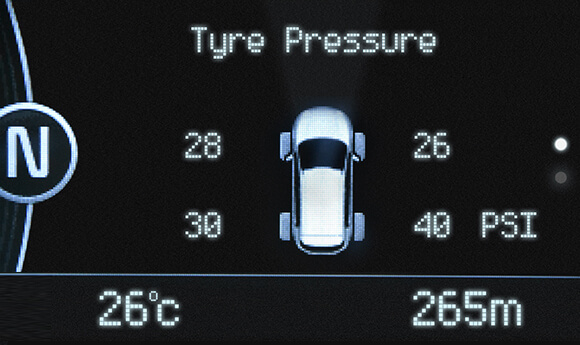TPMS issues are causing alarming rise in MOT failures
16/03/2017 00:00:00by Paul Fincham16/03/2017 00:00:00TPMS issues are causing alarming rise in MOT failuresBluedrop Services


TPMS (Tyre Pressure Monitoring Systems) work to notify drivers to a variance in tyre pressure and allow the opportunity to rectify the situation before its too late, hopefully avoiding blowouts and increasing driver safety.
How Tyre Pressure Monitoring works
If your tyre pressure drops by 6-7 PSI then the warning light will illuminate to alert you to the problem. Millions of cars are now fitted with this system giving drivers the peace of mind that a pressure sensor is monitoring your tyres for you.
TPMS warning lights cause automatic MOT failure
From January 2015 a faulty TPMS became an automatic MOT fail on cars that were registered after January 2012 in an attempt to drive safety in this area. However, since then, as the first wave of three-year old cars were ready for MOT last year, the MOT failure rates actually rose significantly by 212% in 2016 due to TPMS defects. TPMS defects will clearly affect their performance and it has since come to light that many drivers still aren’t fully aware how these systems work, or even regard them as a crucial safety feature.
How to avoid TPMS defects
If drivers do not see the Tyre Pressure Monitoring alert come on with all other warning lights when they start their vehicle, they should immediately check with their service garage that the system is functioning properly. Whilst TPMS sensors are designed to last many years, unfortunately sensors can become faulty due to weather damage, corrosion or accidental damage so it is important to have them checked and to replace core components when needed to ensure they are working correctly and to avoid MOT failure. One of the most common issues is sensor battery failure so it is a good idea to have this checked with every wheel change.
Don’t let TPMS replace manual checks
Whilst TMPS systems are a fantastic way of enhancing driver safety, they should not replace normal manual checks on tyres and you should always continue to check that both your tyres and your TPMS are in a roadworthy condition. Your drivers should carry out regular checks, particularly before long journeys as systems do not inform you on the tread depth or tyre condition. Pressures should continue to be checked and tested at least once a month and when the tyres are cold for an accurate measurement.
TPMS is designed to reduce the number of tyre-related incidents occurring, so it is important as a fleet manager to monitor the performance of them for both safety and insurance premium concerns.Return to blog menuWant to find out more about Bluedrop's Business Insurance?
Call our friendly team now for the right insurance cover - at the best price
+441489780491
Calls recorded for training and quality.



 Privacy and Cookie Policy
Privacy and Cookie Policy